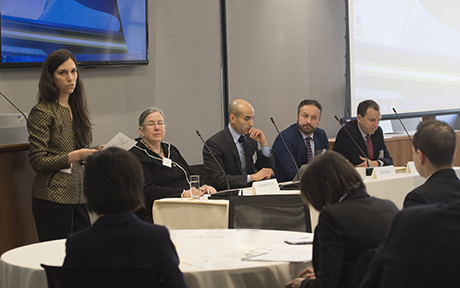Have the Biggest U.S. Banks Become Less Complex?

The global financial crisis, and the ensuing Dodd-Frank Act, identified size and complexity as determinants of banks’ systemic importance, increasing the potential risks to financial stability. While it’s known that big banks haven’t shrunk, the question that remains is: have they simplified? In this post, we show that while the largest U.S. bank holding companies (BHCs) have somewhat simplified their organizational structures, they remain very complex. The industries spanned by entities within the BHCs have shifted more than they have declined, and the countries in which some large BHCs have entities still include numerous “secrecy” or tax-haven locations.
Did the Dodd‑Frank Act End ‘Too Big to Fail’?

One goal of the Dodd-Frank Act of 2010 was to end “too big to fail.” Toward that goal, the Act required systemically important financial institutions to submit detailed plans for an orderly resolution (“living wills”) and authorized the FDIC to create an alternative resolution procedure. In response, the FDIC has developed a “single point of entry” (SPOE) strategy, under which healthy parent companies bear the losses of their failing subsidiaries. Since SPOE makes the parent company responsible for subsidiaries’ losses, we would expect parents to become riskier, relative to their subsidiaries, compared to before the announcement of the SPOE strategy in December 2013. Do bond raters and investors share this view?
Does More “Skin in the Game” Mitigate Bank Risk‑Taking?

It is widely said that a lack of “skin in the game” would distort lenders’ incentives and cause a moral hazard problem, that is, excessive risk-taking. If so, does more skin in the game—in the form of extended liability—reduce bankers’ risk-taking? In order to examine this question, we investigate historical data prior to the Great Depression, when bank owners’ liability for losses in the event of bank failure differed by state and primary regulator. This post describes our preliminary findings.
New Report Assesses Structural Changes in Global Banking

The Committee on the Global Financial System, made up of senior officials from central banks around the world and chaired by New York Fed President William Dudley, recently released a report on “Structural Changes in Banking after the Crisis.” The report includes findings from a wide-ranging study documenting the significant structural adjustments in banking systems around the world in response to regulatory, technological, and market changes after the crisis, while also assessing their implications for financial stability, credit provision, and capital markets activity. It includes a new banking database spanning over twenty-one countries from 2000 to 2016 that could serve as a valuable reference for further analysis. Overall, the study concludes that the changed regulatory and market environment since the crisis has led banks to alter their business models and balance sheets in ways that make them more resilient but also less profitable, while continuing their role as intermediaries providing financial services to the real economy.
The Treasury Market Practices Group: A Consequential First Decade
At the New York Fed: The Appropriate Government Role in U.S. Mortgage Markets
While the U.S. mortgage finance system was at the center of the recent financial crisis, it remains largely untouched by legislative reforms. At the center of these conversations are Fannie Mae and Freddie Mac—both of which were placed into federal conservatorship in September 2008.
Were Banks Ever ‘Boring’?

In a previous post, I documented that much of the expansion into nontraditional activities by U.S. banks began well before the passage of the Gramm-Leach-Bliley Act in 1999, the legislation that repealed much of the Glass-Steagall Act of 1933. The historical record actually contains many prior instances of the Glass-Steagall restrictions being circumvented, with nonbank firms allowed to operate as financial conglomerates and engage in activities that go beyond traditional banking. These broad industry dynamics might indicate that the business of banking tends to expand firm boundaries beyond a traditional—“boring”—perimeter.
Were Banks ‘Boring’ before the Repeal of Glass‑Steagall?
At the N.Y. Fed: The Evolution of OTC Derivatives Markets
Financial Crises and the Desirability of Macroprudential Policy

The global financial crisis has put financial stability risks—and the potential role of macroprudential policies in addressing them—at the forefront of policy debates. The challenge for macroeconomists is to develop new models that are consistent with the data while being able to capture the highly nonlinear nature of crisis episodes. In this post, we evaluate the impact of a macroprudential policy that has the government tilt incentives for banks to encourage them to build up their equity positions. The government has a role since individual banks do not internalize the systemic benefit of having more bank equity. Our model allows for an evaluation of the tradeoff between the size of such incentives and the probability of a future financial crisis













 RSS Feed
RSS Feed Follow Liberty Street Economics
Follow Liberty Street Economics